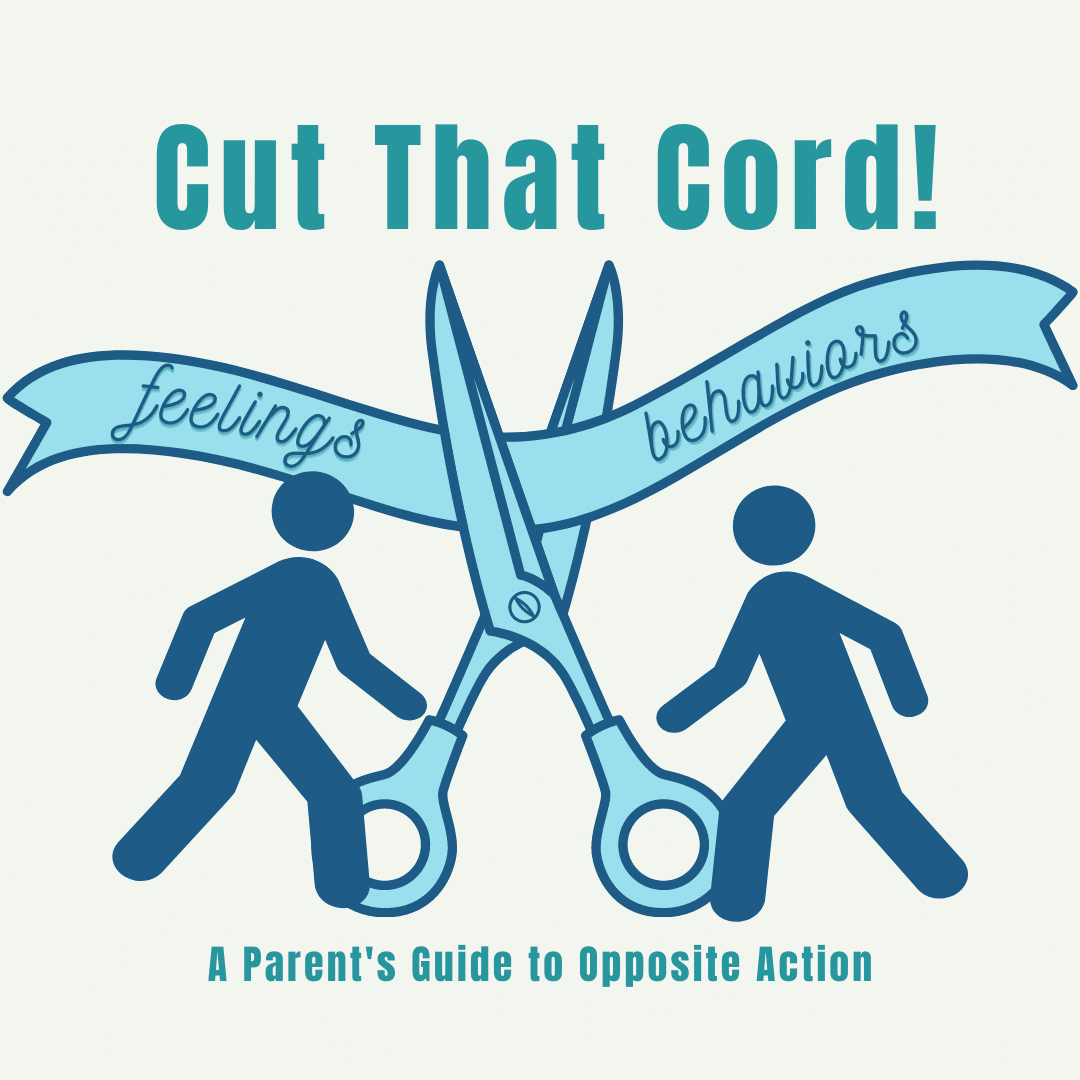Here we are again. You’re staring at a sink filled with food-crusted plates, overflowing cups, and more silverware than you can count. How many times have you said, “Clean up after yourself!”? How many conversations have you had about the importance of taking accountability, being responsible, doing your part? You can feel the pressure in your chest, the lump rising in your throat. You’re going to yell. You’re going to finally be heard! You’re going to…be met with sighs and protests and rolled eyes, and find yourself back here in twenty minutes, elbow-deep in dish soap and fighting back tears of guilt and a feeling of total hopelessness.
Sound familiar? Parenting is hard. Parenting when you yourself are feeling frustrated and frazzled is something of a Herculean task. Sometimes, our emotions simply get the best of us. It happens to everyone. Fortunately, in DBT we have a skill that is designed to override the automatic behaviors that piggy-back on hot-tempered emotions and help us regain control over how we respond to the situation at hand. It’s called Opposite Action.
Opposite Action involves purposely doing the opposite of what your emotion tells you to do. When we feel an intense emotion, our natural instinct is often to act on it. It’s what psychologists call engaging in mood-dependent behavior. You feel something—Boom!—you do something. Of course, this can lead to unhelpful responses like yelling, threatening, criticizing, grounding, or other forms of punishment that have the potential to not only damage the parent-child relationship, but to produce lasting and harmful psychological effects on youth.
The good news is there is a way to cut the cord between our feelings and behaviors. By using Opposite Action, we can intentionally choose to respond in a way that is opposite to our emotional urge, which can help us to regulate our own emotions and improve our relationships with our children.
So how do you do it? Follow these steps:
Notice your emotions and urges: Remember, you’ve got to name it to tame it. Tune into your body to help you identify what emotion you’re experiencing. Are you feeling angry, ashamed, and/or disappointed? What is your emotion telling you to do? Notice the strength of the urges.
Check the Facts: Oftentimes, our interpretations of an event can ramp up our emotional intensity. Our kid leaves dishes in the sink and our brain says, “They’re so inconsiderate! I’ve raised an entitled brat.” Such thoughts only serve to escalate our perfectly natural emotion of mild irritation and transform it into seething resentment. Taking a moment to catch those thoughts and rephrase them into more accurate descriptions (e.g., “He left his dishes in the sink”) and come up with more charitable interpretations of the events (e.g., “He’s had two big tests this week and is stressed out. Sometimes I leave things out when I have a lot on my plate”) can help keep our emotions in check.
Consider the consequences: Often we call this practice consulting your Wise Mind. Ask yourself, “Is acting on this emotion going to be effective in the situation?” Meaning, is following your emotional urges going to bring you closer to your long-term goal? For many parents, their long-term goal is to have a healthy relationship with their children and to share their values with them. Although it might seem like yelling, criticizing, or punishing is the only way to get through to your child, it’s important to note that the context of our words will be more salient than the content. Basically, your kid isn’t going to understand your message if their brain is focused on how you delivered it.They’re not going to empathize about dirty dishes and correct the behavior if they are being yelled at by you.
So even if in the moment your mind is telling you to just lay into them, think about the long-term consequences of acting on your urges. Will it improve the situation, or will it make things worse? Will it damage your relationship with your loved one? If so, move onto the next step.
Figure out the opposite action: Instead of yelling, criticizing, etc., choose an opposite action that is more likely to improve the situation and your relationship with your child. Oftentimes when we are angry, our emotion tells us to pounce. We get all fired up and tense and are ready to attack. Opposite action would have us adopt a different posture.
- Unclench those hands (bonus points if you turn them up into a willing hands pose), release that jaw, breathe slowly into your belly.
- Instead of leaning into your child, take a step back. It’s perfectly okay to take a moment to collect yourself. Call a time-out and take a break from the situation. You can always revisit it when your emotional temperature has lowered.
- Soften your tone of voice and channel your most empathic self. See things through their eyes. Imagine what it’s like to be them for a moment (especially if you wish they demonstrated empathy for you). Modeling is a powerful form of teaching new behavior.
Practice opposite action: Act on the opposite action, even if it feels uncomfortable or unnatural at first. With practice (a lot of practice), it will become easier to cut the cord between your emotions and actions, putting you in the driver’s seat of your behavior. Like parenting, rehearsing opposite action is a challenging and rewarding process. If at first you don’t succeed? Resist the urge to beat yourself up and instead meet yourself with some compassion (AKA: Try using Opposite Action on yourself!). Remember that you are learning a new skill and acknowledge the effort you’re making.
To learn more about Opposite Action and further applications of this skill, check out Episode 12 of our DBT podcast House on Fire.



